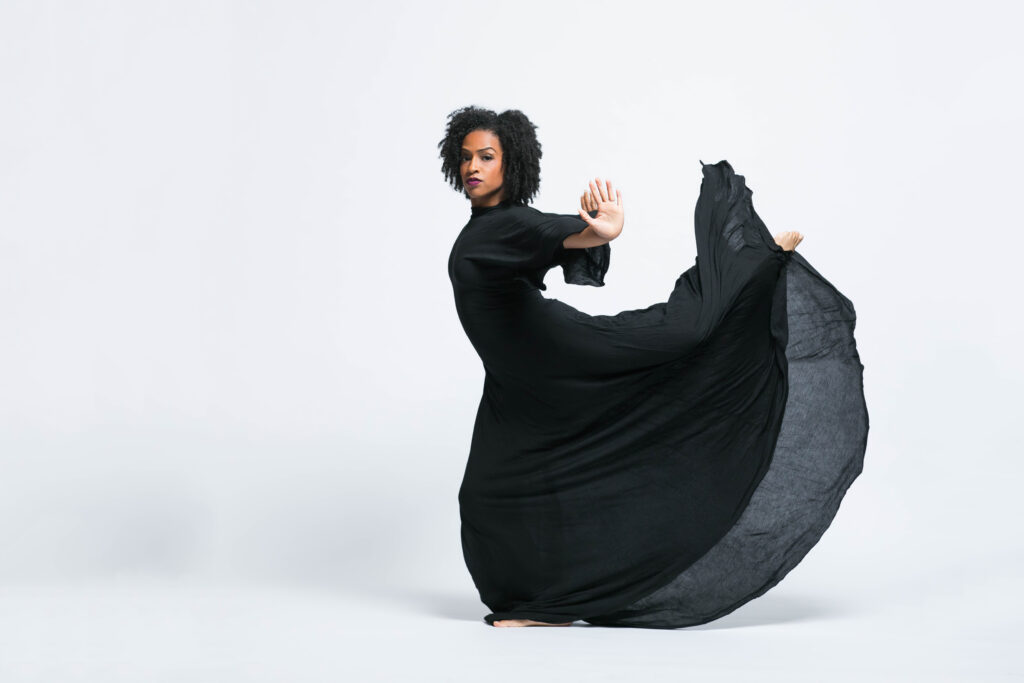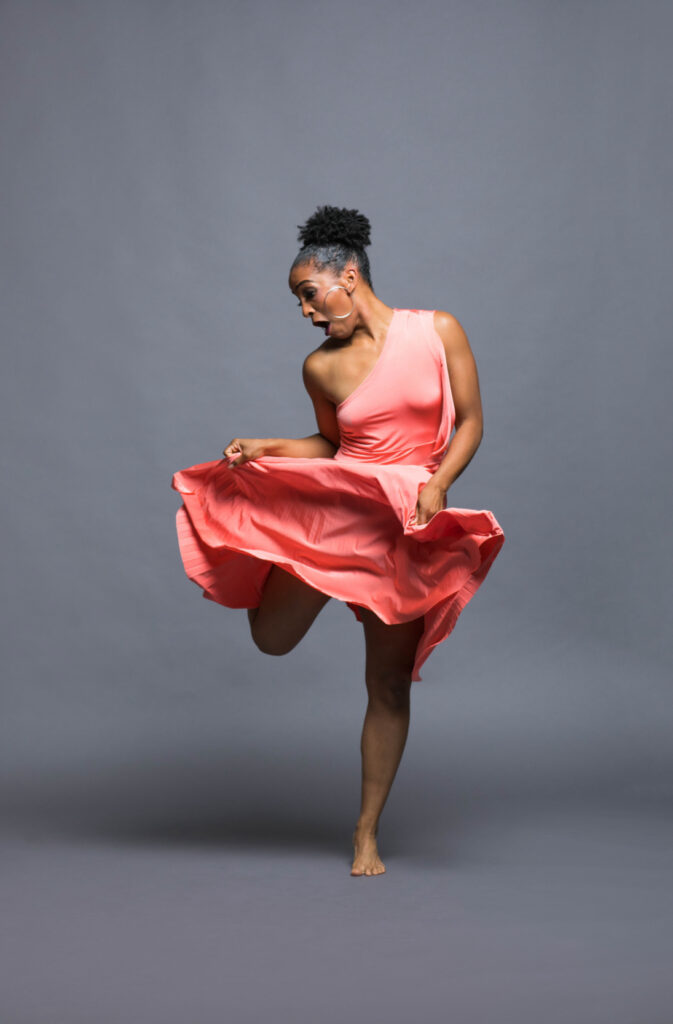Faculty Spotlight with Shannon Grayson
April 23, 2024

Professor Shannon Grayson | Photo by Todd Rosenberg
Get to know the illustrious artists, scholars, practitioners, and faculty at the USC Glorya Kaufman School of Dance through our new Faculty Spotlight series.
Today, we sit down with Assistant Professor of Practice Shannon Grayson as she recounts her passion for teaching, versatility in training, technique certifications and more.
What is your favorite thing about teaching at USC Kaufman?
I really love the students here at Kaufman and the guest artists we receive. There is a lot of rigor and variety within the curriculum, and I feel that we as faculty are constantly trying to enhance and expand upon teaching practices. On top of that, all of the students are incredibly talented and skilled. I feel that I can give advanced material without having to hold back, which is always a pleasure.
How would you describe the process getting certified as a Horton Technique instructor through the Ailey School?
I actually began my certification during the pandemic. This was the first time that the certification process was ever offered virtually, which presented a slight challenge; however, in a way, this was a good challenge. It encouraged me to make sure that I was properly understanding what Ana Marie Forsythe—the course instructor—was teaching. The process was two weeks altogether.
The first week was focused on beginner level teaching and the second week on intermediate/advanced level material. This opportunity to be in a Zoom room full of other teachers who are also passionate about the technique, along with Ana Marie Forsythe who broke down the exercises and explained the history of the technique, was really cool. Overall, the experience was really great. I would do it again!

As a certified Horton Technique instructor, what has been the most rewarding part of sharing this technique with students?
I feel so lucky to be at an institution that facilitates Horton Technique training because not all universities offer it. Many students here have not studied Horton consistently in the past, but have a technical foundation in other styles. Being able to introduce these dancers to the fundamentals is exciting, especially since it is connected to several styles that students have prior training in.
Even jazz has evolved with Horton technique! Seeing how all of this knowledge gets meshed together within the students’ practices is very interesting. That being said, I believe that it is important to be able to recognize where a step comes from as well as the intention or purpose behind it.
When did you know that you wanted to start teaching dance? Was this always a passion of yours?
My university experience actually discouraged me from teaching. When I moved to Chicago, Claire Bataille—founding member of Hubbard Street Dance—saw that I was teaching little kids and recognized my work ethic. She asked if I would like to teach for Hubbard Street and later became my mentor. Her genuine faith led me to realize that I have a lot of information to share through teaching. This quickly transformed my passion for performing into a passion for teaching. I loved providing people with information and saw myself in a lot of students.

Having trained in an incredibly diverse range of dance forms, how would you say these various forms intersect to inform your teaching process?
There are so many intersections happening between various dance forms today. For instance, jazz and ballet intersect with Horton Technique, similar to how Dunham and Hip-Hop intersect with Afro-Cuban and West African dance. The intersection of forms is actually one of the reasons I am teaching at Kaufman. I have really studied the foundation of each technique, which is why I am able to authentically educate students.
This then supports the students in being able to engage in their own creation and teaching practices. As a faculty member, I aim to ensure that they can recognize which steps derive from which form. I always aim to ensure connecting the histories of the forms. It is a skill and strength to have this knowledge.
When you are not teaching or in the studio, what is your favorite pastime?
In my spare time, I like to watch YouTube, especially videos on animals. I really love animals. So, when I visit home, I take care of a lot of other people’s animals. I also play basketball with my husband in the mornings, which is always fun!